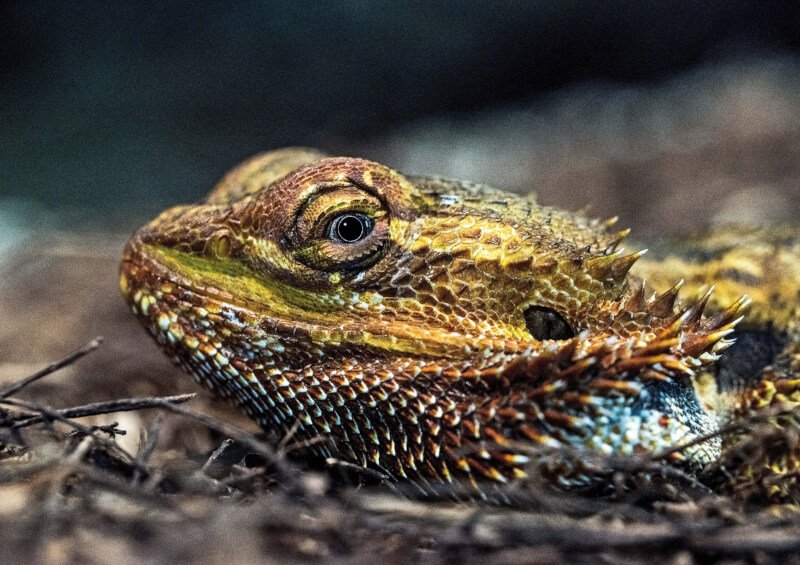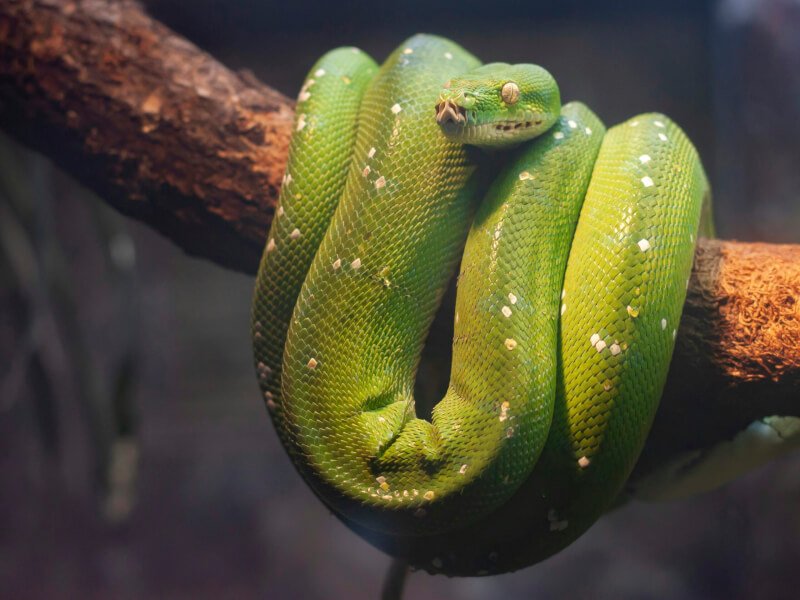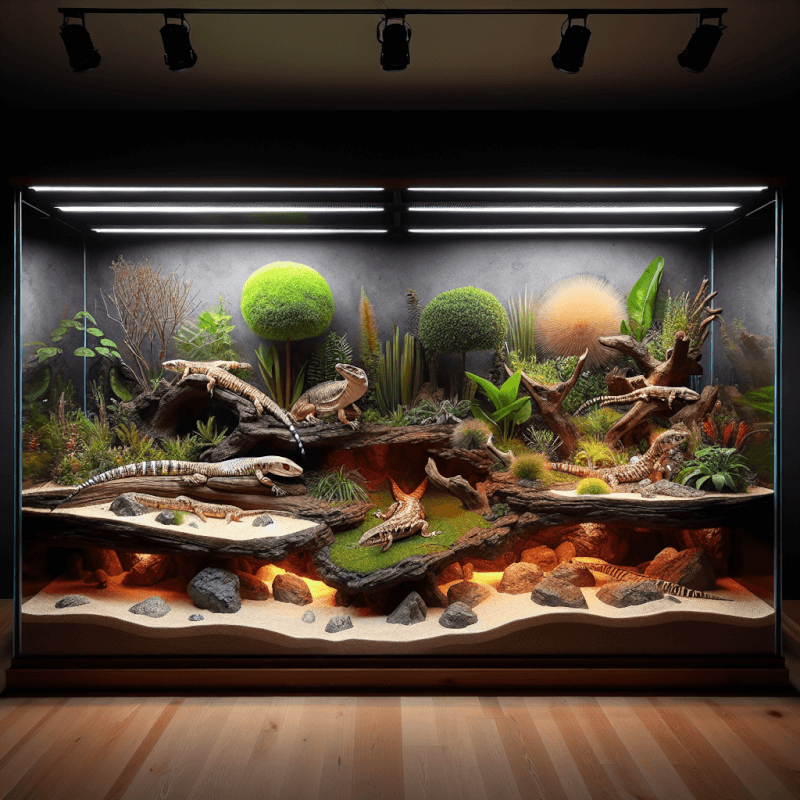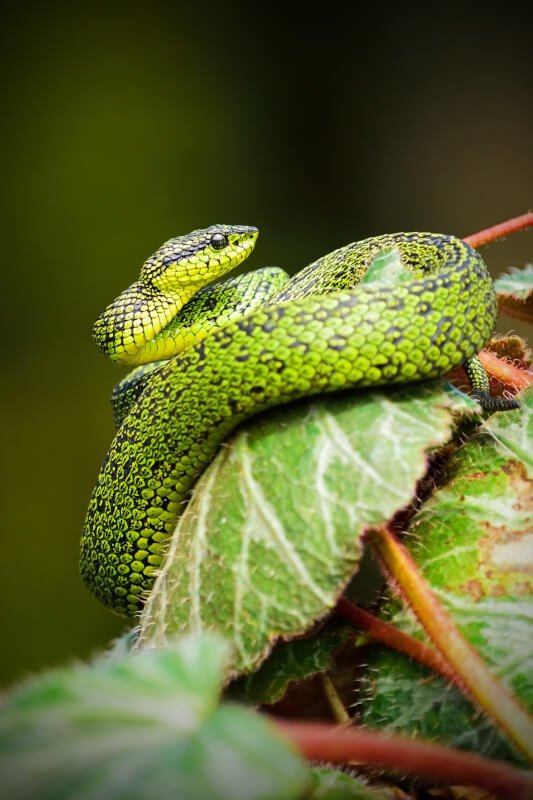Imagine having a stunning and captivating habitat for your beloved pet reptiles that truly emulates their natural environment. The Reptile Tank Vivarium, carefully designed and crafted to ensure optimal conditions for your scaly friends, is the perfect addition to your home or office. With its state-of-the-art features and attention to detail, this vivarium provides a safe and comfortable space for your reptiles to thrive. From adjustable temperature and humidity controls to the inclusion of natural elements like plants and rocks, the Reptile Tank Vivarium ensures that your reptiles feel right at home. Say goodbye to boring and generic reptile tanks, and say hello to an extraordinary and eye-catching living space for your reptilian companions.
Choosing the Right Reptile Tank Vivarium
When it comes to keeping reptiles as pets, providing them with a suitable habitat is essential for their health and wellbeing. A reptile tank vivarium serves as their home, mimicking their natural environment and ensuring they have everything they need to thrive. But with so many options available, how do you choose the right one? In this comprehensive guide, we will take you through all the factors to consider when selecting a reptile tank vivarium.
Size of the Tank
One of the most crucial aspects to consider when choosing a reptile tank vivarium is the size. The tank should be appropriate for the size of your reptile, providing ample space for them to move around comfortably. Different reptile species have different space requirements, so be sure to research the specific needs of your chosen reptile beforehand. Providing a tank that is too small will restrict their movements and can lead to stress and other health issues.
Type of Material
The material of the tank is another important factor to consider. Glass tanks are the most common and widely available option. They provide excellent visibility and are relatively easy to clean. Alternatively, you can opt for a plastic or acrylic tank, which tends to be lighter in weight and more durable. Ultimately, the material choice will depend on your preferences and the specific needs of your reptile.
Ventilation and Airflow
Proper ventilation is vital for maintaining a healthy environment within the reptile tank vivarium. Good airflow helps control temperature and humidity levels, preventing the growth of bacteria and mold. Look for tanks with built-in vents or choose one that allows for easy installation of ventilation systems. Adequate airflow will ensure that your reptile receives adequate oxygen and fresh air, promoting their overall wellbeing.
Accessibility and Maintenance
Consider the accessibility and ease of maintenance when selecting a reptile tank vivarium. Look for tanks with front-opening doors or removable tops, allowing for easy access during cleaning and feeding. Additionally, choose a tank that has a removable bottom tray or pull-out drawer to simplify substrate changes and waste removal. A tank that is easy to maintain will save you time and effort, ensuring you can provide a clean and healthy environment for your reptile.
Setting Up the Reptile Tank Vivarium
Now that you have chosen the right reptile tank vivarium for your pet, it’s time to set it up properly. This section will guide you through the necessary steps to create an ideal habitat for your reptile, focusing on substrate, temperature and humidity control, lighting and UVB, as well as decoration and hiding spots.
Substrate
Selecting the right substrate is essential for recreating a natural environment for your reptile. The substrate should mimic their habitat and provide a comfortable and safe surface for them to walk, burrow, or dig. Options such as reptile carpet, bark, coconut fiber, and sand can be suitable, depending on the species and their specific needs. Avoid using substrates that can be ingested easily, as this can lead to serious health issues. Research the specific requirements of your reptile and choose a substrate accordingly.
Temperature and Humidity Control
Maintaining proper temperature and humidity levels within the reptile tank vivarium is crucial for your reptile’s health and overall wellbeing. Different reptiles have different temperature and humidity preferences, so it’s essential to research the specific requirements of your species. Use thermostats and thermometers to monitor and regulate the temperature, providing a temperature gradient that allows your reptile to thermoregulate. Humidity can be regulated through the use of misters, water bowls, or by choosing the appropriate substrate.
Lighting and UVB
Proper lighting and UVB exposure are essential for reptiles, as it helps them synthesize vitamin D3 and metabolize calcium effectively. UVB lights should be provided to mimic natural sunlight and should be placed within the reptile tank vivarium based on the specific needs of your reptile. Additionally, provide a suitable basking spot with a heat lamp to ensure your reptile can thermoregulate and maintain proper body temperature.
Decoration and Hiding Spots
Creating a stimulating and enriching environment within the reptile tank vivarium is crucial for your reptile’s mental and physical wellbeing. Decorate the tank with various elements such as rocks, branches, and plants to mimic their natural habitat and provide them with ample hiding spots. These hiding spots are essential for reducing stress and promoting a sense of security for your reptile. Ensure that any decorations or plants used are reptile-safe and non-toxic.
Feeding and Watering in the Reptile Tank Vivarium
Feeding your reptile a well-balanced and appropriate diet is essential for their health and vitality. Additionally, providing them with proper hydration is crucial. This section will guide you on selecting the right food, establishing a feeding schedule, and meeting their watering needs.
Selecting the Right Food
Different reptiles have different dietary requirements, so it’s important to research the specific needs of your reptile. Many reptiles are insectivorous and require a diet consisting of live insects such as crickets, mealworms, or roaches. Others may require a combination of insects, fruits, vegetables, and even small mammals or fish. It’s important to provide a balanced diet that meets their nutritional needs and promotes their overall health.
Feeding Schedule
Establishing a regular feeding schedule is essential for maintaining your reptile’s health. Most reptiles should be fed on a schedule that aligns with their natural feeding habits. For example, nocturnal reptiles may prefer to be fed in the evening, while diurnal reptiles may be more active during the day. Avoid overfeeding, as this can lead to obesity and other health issues. Monitoring the feeding habits and body condition of your reptile will help you determine the appropriate feeding schedule.
Watering Needs
Proper hydration is essential for the health and wellbeing of your reptile. Provide a shallow water dish in the reptile tank vivarium, ensuring it is easily accessible and large enough for your reptile to soak if needed. Some reptiles, particularly desert dwellers, may not drink directly from a water dish but instead obtain their hydration from their food or through other means. Research the specific watering needs of your reptile and ensure their hydration requirements are met.
Species-Specific Requirements for Reptile Tank Vivariums
Different reptile species have specific requirements when it comes to their tank setup. This section will provide an overview of the unique needs of desert dwelling reptiles, tropical reptiles, and amphibians.
Desert Dwelling Reptiles
Desert dwelling reptiles, such as the bearded dragon and leopard gecko, require a tank vivarium that replicates arid desert conditions. This includes providing a warm basking spot, a temperature gradient, and a dry substrate such as sand or reptile carpet. These reptiles also benefit from UVB exposure and require a diet consisting of both insects and vegetables.

Tropical Reptiles
Tropical reptiles, such as crested geckos and green tree pythons, require higher humidity levels within their tank vivarium. This can be achieved by using a substrate that retains moisture, providing a misting system, or placing a water bowl. Additionally, these reptiles thrive in temperatures consistent with their tropical habitat and often require a diverse diet consisting of insects, fruits, and plants.
Amphibians
Amphibians, such as frogs and salamanders, have unique requirements when it comes to their tank vivarium. These species often require an aquatic or semi-aquatic setup, with a water section and a land area. Proper filtration and water quality maintenance are crucial for their health. Amphibians also require a moist substrate and a temperature range that aligns with their natural habitat. Research the specific needs of your amphibian and provide an environment that meets their requirements.
Maintaining the Reptile Tank Vivarium
Proper maintenance of the reptile tank vivarium is essential for your reptile’s health and wellbeing. This section will guide you through regular cleaning and sanitization, monitoring and controlling parameters, as well as preventing and addressing health issues.
Regular Cleaning and Sanitization
Regular cleaning and sanitization of the reptile tank vivarium are crucial for preventing the buildup of bacteria, mold, and parasites. Remove any uneaten food, feces, and soiled substrate daily to maintain a clean environment. Deep clean the tank and all tank accessories on a regular basis, using reptile-safe disinfectants. Be sure to follow the instructions provided with the disinfectant to ensure it is safe for your reptile.
Monitoring and Controlling Parameters
Regularly monitor and control key parameters within the reptile tank vivarium to ensure optimal conditions for your reptile. Use thermometers and hygrometers to monitor temperature and humidity, adjusting as necessary. Keep a record of these parameters to identify any significant changes that might indicate a problem. Additionally, monitor the water quality if you have an aquatic setup and ensure proper filtration and water changes are done regularly.
Preventing and Addressing Health Issues
Preventing and promptly addressing health issues is crucial for the wellbeing of your reptile. Regularly observe your reptile’s behavior, appetite, and overall appearance, as any changes could indicate an underlying health problem. Maintain proper hygiene within the tank, provide a balanced diet, and ensure their habitat meets their specific needs. If you notice any signs of illness or distress, consult a reptile veterinarian immediately for proper diagnosis and treatment.
Common Mistakes to Avoid With Reptile Tank Vivariums
While it’s important to know what to do when setting up and maintaining a reptile tank vivarium, it’s equally important to know what not to do. Avoiding common mistakes will help ensure the health and wellbeing of your reptile. This section highlights some of the common mistakes to avoid.
Inadequate Tank Size
Providing a tank that is too small for your reptile is one of the most common mistakes. A small tank restricts their movements and can cause stress and other health issues. Research the space requirements of your reptile species and make sure to provide a tank that allows them to move, climb, and explore comfortably.

Poor Temperature and Humidity Regulation
Maintaining proper temperature and humidity levels within the reptile tank vivarium is crucial for your reptile’s health. Inadequate temperature control can lead to metabolic issues, while improper humidity can cause respiratory problems. Invest in quality thermometers, hygrometers, and heating and misting systems to ensure accurate and consistent regulation of these parameters.
Neglecting Lighting and UVB
Proper lighting and UVB exposure are crucial for reptiles as they aid in the synthesis of vitamin D3 and calcium metabolism. Neglecting UVB lighting can lead to nutritional deficiencies and bone-related diseases. Be sure to provide appropriate UVB lighting and replace the bulbs as recommended by the manufacturer.
Choosing the Incorrect Substrate
Using the wrong substrate for your reptile can lead to serious health issues. Avoid substrates that can be ingested easily or cause impaction. Additionally, some reptiles have specific substrate requirements based on their natural habitat. Research the needs of your reptile and choose a suitable substrate accordingly.
Leopard Gecko Reptile Tank Vivarium
Leopard geckos are popular reptile pets known for their unique appearance and easy care requirements. In this section, we will provide specific information on tank size and setup, temperature and humidity requirements, feeding and watering, as well as their behavioral characteristics.
Tank Size and Setup
Leopard geckos require an enclosure that provides ample space for them to move and explore. A tank size of 20 gallons is suitable for one leopard gecko, with an additional 10 gallons for each additional gecko. The tank should be securely enclosed with a screen top or lid to prevent escapes. Provide multiple hides, climbing structures, and a shallow water dish for them to drink from and soak if desired.
Temperature and Humidity Requirements
Leopard geckos are native to arid regions, so it’s important to provide a warm and dry environment. The ambient temperature should be around 88-92°F (31-33°C) during the day and can drop to the 70s°F (low 20s°C) at night. Use a thermostat and heat mat to regulate the temperature, ensuring a warm basking spot of around 90-95°F (32-35°C). The humidity levels should be kept relatively low, around 30-40%.
Feeding and Watering
Leopard geckos are insectivorous and primarily eat live insects such as crickets, mealworms, or dubia roaches. Feed them appropriately sized prey, ensuring the insects are no larger than the space between their eyes. Dust the prey with a calcium and vitamin D3 supplement before feeding. Provide a shallow water dish in the tank for them to drink from, but they generally obtain their hydration from their food and do not require regular misting.

Behavioral Characteristics
Leopard geckos are nocturnal and spend most of their day hiding and resting. They are generally docile and make great pets for beginners. They do not require regular handling and are best observed from outside the tank. Leopard geckos are known for their ability to regenerate their tails, which can detach if threatened. However, it’s important to handle them gently to avoid causing stress or injury.
Crested Gecko Reptile Tank Vivarium
Crested geckos are fascinating reptiles known for their unique appearance and ease of care. In this section, we will provide specific information on habitat design and size, temperature and humidity preferences, feeding and watering considerations, as well as handling and enrichment.
Habitat Design and Size
Crested geckos are arboreal reptiles, meaning they spend most of their time in trees. They require a vertical tank that provides climbing structures and ample hiding spots. A tank with dimensions of 18x18x24 inches is suitable for one adult crested gecko. Decorate the tank with live or artificial plants and provide cork bark or branches for climbing.
Temperature and Humidity Preferences
Crested geckos require temperatures between 72-78°F (22-25°C) during the day and can tolerate a slight drop in temperature at night. Use a low-wattage heat lamp or under-tank heating pad to maintain the desired temperature. Crested geckos thrive in high humidity levels of around 60-80%. This can be achieved by misting the tank daily and providing a moist substrate.
Feeding and Watering Considerations
Crested geckos are omnivorous and eat a variety of food items. Their diet primarily consists of commercial crested gecko diets, which come in powdered form and can be mixed with water. Additionally, they can be offered small insects such as crickets or roaches occasionally. Provide a shallow water dish in the tank for them to drink from, but they mainly obtain their hydration from their food and licking water droplets off tank surfaces.
Handling and Enrichment
Crested geckos are generally docile but can be skittish. It’s important to handle them gently and minimize stress. Avoid excessive handling, as it can cause them to drop their tails, although the tails do not regenerate like those of leopard geckos. Providing enrichment in their tank, such as climbing structures and hiding spots, will keep them entertained and stimulated.
Bearded Dragon Reptile Tank Vivarium
Bearded dragons are popular reptile pets known for their friendly demeanor and unique appearance. In this section, we will provide specific information on suitable tank size and layout, temperature and UVB requirements, feeding and watering practices, as well as social interaction and exercise.
Suitable Tank Size and Layout
Bearded dragons require a spacious tank to accommodate their natural behaviors and provide them with ample space to move around. A tank size of at least 75 gallons is recommended for one adult bearded dragon, with larger tanks preferred if space allows. Provide a variety of hides, climbing structures, and basking spots with rocks or branches. The tank should be securely enclosed with a screen top or lid.
Temperature and UVB Requirements
Maintaining proper temperature and UVB exposure is crucial for bearded dragons. The basking spot temperature should be around 95-105°F (35-40°C), while the cooler side of the tank should be around 80°F (27°C). Use a UVB light specifically designed for reptiles and replace it according to the manufacturer’s recommendations. UVB lighting should be provided for 10-12 hours a day to ensure proper calcium metabolism.
Feeding and Watering Practices
Bearded dragons are omnivorous and require a varied diet consisting of both insects and plant matter. Offer a combination of gut-loaded insects such as crickets, dubia roaches, and mealworms, as well as a variety of leafy greens and vegetables. Provide a shallow water dish for them to drink from, but bearded dragons mainly obtain their hydration from their food and may not drink directly from the dish.
Social Interaction and Exercise
Bearded dragons are generally sociable reptiles that enjoy interaction with their owners. They can be hand-tamed and enjoy being held and petted. However, it’s important to provide supervised and controlled social interaction, as excessive handling or playing can cause stress or lead to accidents. Additionally, provide opportunities for exercise outside the tank, such as supervised time in a secure and safe enclosure.
Corn Snake Reptile Tank Vivarium
Corn snakes are popular pet snakes known for their docile temperament and low maintenance requirements. In this section, we will provide specific information on their housing needs and enclosure size, temperature and humidity regulation, feeding and watering guidelines, as well as handling and enrichment activities.
Housing Needs and Enclosure Size
Corn snakes require a secure enclosure that provides ample space for them to explore and move around. A tank size of at least 30 gallons is suitable for an adult corn snake, with larger tanks preferred if space allows. The enclosure should be securely locked, as corn snakes are excellent escape artists. Provide multiple hiding spots, branches, and climbing structures to mimic their natural habitat.
Temperature and Humidity Regulation
Corn snakes require a temperature gradient within their enclosure to thermoregulate effectively. The warm side of the tank should be around 85°F (29°C), while the cooler side can be maintained at around 75°F (24°C). Use heat mats or heat lamps to provide the appropriate temperature. The humidity level should be kept relatively low, around 40-50%. Good ventilation and a properly balanced substrate help maintain appropriate humidity levels.
Feeding and Watering Guidelines
Corn snakes are carnivorous and primarily eat mice or rats. Feed them appropriately sized prey, ensuring the size is proportionate to the girth of the snake. Provide fresh, clean water in a shallow water dish that is easily accessible to the snake. Corn snakes obtain most of their hydration from their food but should still have access to water at all times.
Handling and Enrichment Activities
Corn snakes are generally docile and can be easily handled. However, it’s important to handle them gently and avoid sudden movements or loud noises that can startle them. Regular handling will help them become more accustomed to human interaction. Enrich their enclosure with climbing structures, branches, and hides to provide mental stimulation and exercise opportunities.



